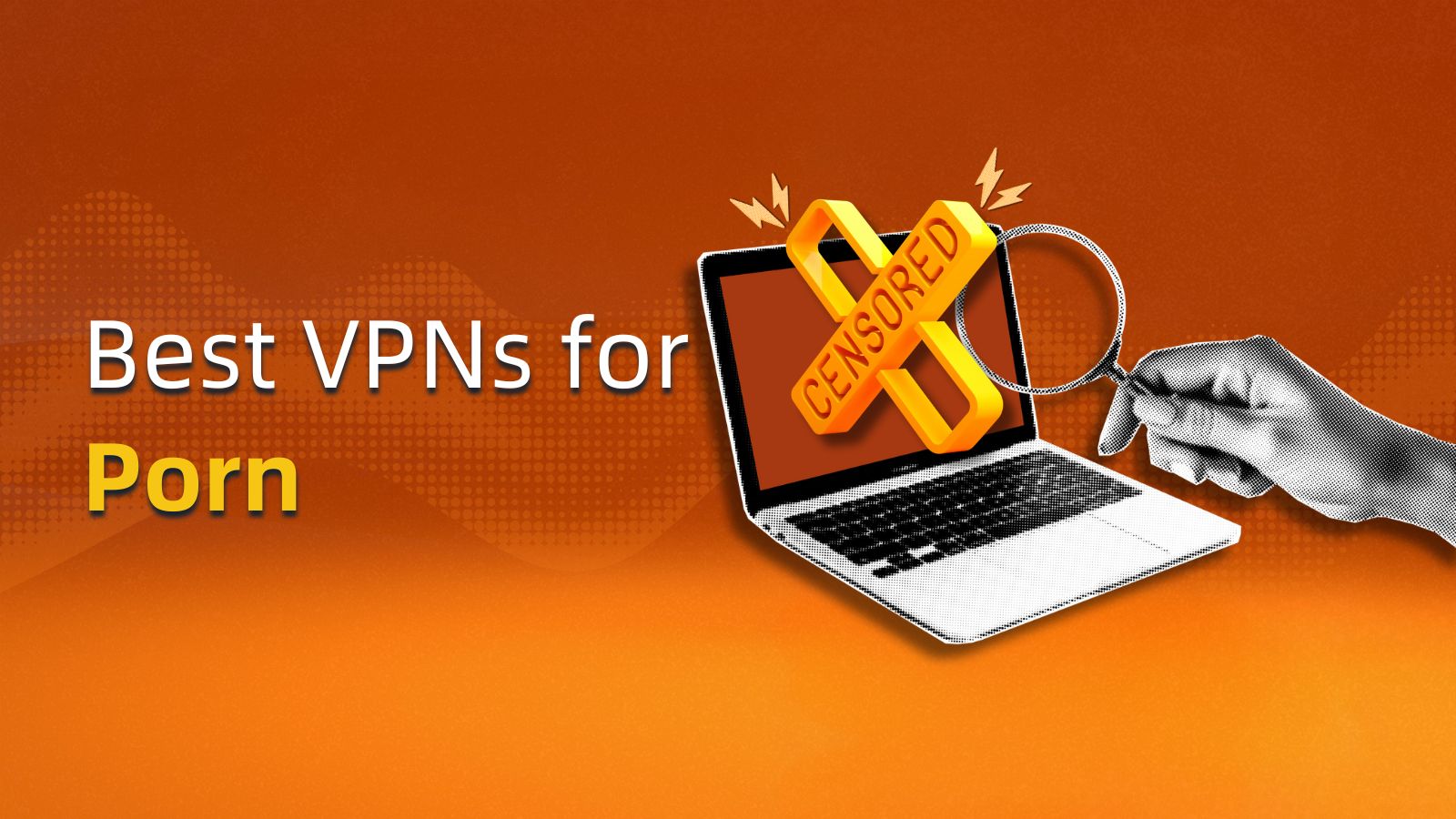
8 Best Budget Smartphones Under $300 to Buy in 2020
Not everyone needs a flagship iPhone or Android device for daily tasks. Powerful smartphones are becoming ever so affordable due to stiff competition from various vendors, especially Chinese ones. OnePlus started the flagship-killer trend by bringing top-end features to mid-range prices. Following this, many OEMs - such as Xiaomi, Moto, Realme, and so on - have started offering excellent mid-range products priced under $300.
Picking the best smartphone under $300 is a tough task, given the sheer number of options out there. Most smartphone purchases in the U.S. are via carriers, but those who wish to pick affordable mid-range devices have to purchase them unlocked and hope they will work with the carrier of their choice. While most phones support popular GSM carriers, not all support CDMA carriers such as Verizon, so you will have to check carrier compatibility before purchase.
When you consider smartphones under $300, you mostly get mid-range SoCs from Qualcomm, such as the Snapdragon 600 or entry-level 700 series. RAM and storage options are usually no more than 6 GB and 64 GB, respectively, although higher capacities are occasionally possible.
With that in mind, here are our picks for the 8 best smartphones under $300 to buy in 2020.
1. Xiaomi Mi 9T
Xiaomi is known for offering high performance at budget price points without compromising too much on the features. The Xiaomi Mi 9T is one such smartphone. The Mi 9T is essentially a rebranded Redmi K30, and it manages to make a mark for itself in the hotly contested mid-range segment. The phone sports a bezel-less 6.39-inch AMOLED FHD+ display that offers deep blacks and vivid colors. The Mi 9T sticks to recent trends and does not include a notch or punch-hole for the selfie camera. Instead, there's a pop-up module that comes up whenever the front camera is activated. The only negative aspect of the otherwise excellent display is the low brightness. At 400 nits, it is okay for the indoors but does pose issues in direct sunlight. The display also includes an in-display fingerprint sensor.
One thing that contributes a lot to the Mi 9T's affordability is the Qualcomm Snapdragon 730 SoC. While this won't matter to those who aren't after flagship specs, it does have some performance deficits compared to the flagship Snapdragon 855. That being said, for most day-to-day tasks, the Snapdragon 730 is plenty capable, and even gamers will find the chip to be fast and responsive. The lower SoC also helps with battery life. Xiaomi already provides a generous 4,000 mAh battery that supports 18W fast charging, which should mean that the phone will outlast a typical workday. As with most Xiaomi phones, this one comes with MIUI 11 based on Android 9 Pie. An Android 10 update will be in the offing soon. Camera quality is good, and although the phone struggles a bit with dim light, the overall imaging is quite good for its price. Overall, the Xiaomi Mi 9T makes for one of the best smartphones under $300 in 2020 and is sure to give good competition to many other phones in this segment.
- Pros: Good feature set; Good display
- Cons: Low light camera performance could be improved
2. Motorola Moto G7
- SoC: Qualcomm Snapdragon 632
- RAM / Storage (GB): 4 / 64, expandable up to 512 GB
- Display: 6.2-inch LCD FHD+
- Cameras: Rear - 12 MP + 5 MP depth; Front - 8 MP
- Battery: 3,000 mAh
- Dimensions (W x H x D): 2.96 x 6.18 x 0.31 in
The Motorola Moto G7 ticks most boxes expected from a budget midrange smartphone in 2020. The Moto G7 does not really compete with the likes of Xiaomi or Huawei, but it does offer an overall well-rounded smartphone experience. The Qualcomm Snapdragon 632 has an aging chipset but is still pretty capable for most tasks and offers excellent battery life. The included 3,000 mAh battery is below today's standards but still manages to provide users with extended use hours without having to reach for the charger. The Moto G7 is also available in three other variants — Plus, Power, and Play, offering you quite a range of options to choose from. The phone feels premium, despite it being made mostly of polycarbonate. The display is a 6.2-inch FHD+ LCD panel with a tear-drop shaped notch near the top bezel to house the 8 MP selfie camera. The display is fine for daily use and is sufficiently bright. Unlike most budget smartphones, the Moto G7 offers a triple-card slot, which means you can use two nano SIMs and a microSD card at once.
The best part about the Moto phones is that they offer a stock Android experience, which should allow for a much-streamlined use without the commonly seen added bloatware. Motorola does offer a few customization options of its own, but they are grouped separately and do not hinder usage. All built-in apps are what Google offers by default. Motorola also bundles in an FM player with RDS and recording capabilities, along with a camera app. The camera does a decent job when there's adequate light, but the photo quality declines in low-light. The same is available for the selfie cameral. The Moto G7 is excellent for those who require a decent phone as their first smartphone, without too many bells and whistles. For power users, the performance may be a bit unsatisfactory, especially while multitasking.
- Pros: Affordable; Stock Android
- Cons: Slow SoC; Average cameras
3. Huawei P30 Lite
- SoC: HiSilicon Kirin 710
- RAM / Storage (GB): 4 / 128, expandable up to 512 GB
- Display: 6.15-inch IPS FHD+
- Cameras: Rear - 48 MP + 8 MP ultrawide + 2 MP depth; Front - 24 MP
- Battery: 3,340 mAh
- Dimensions (W x H x D): 2.86 x 6.02 x 0.29 in
The Huawei P30 is a premium smartphone, but for those who don't need so many characteristics, there's the P30 Lite. At a price under $300, we do not expect flashy, premium designs, but the P30 Lite does in no way look cheap. You get the same glossy frame and gradient back like on the regular P30, along with a similar, albeit somewhat less capable triple-camera setup. The camera configuration varies depending on the region, though. As with all Huawei and Honor phones, the Huawei P30 Lite is powered by Huawei's in-house HiSilicon Kirin 710 chipset. The Kirin 710 is pretty capable of handling most daily tasks, including gaming, and is also light on the battery. The P30 Lite has both facial, and fingerprint unlocks, which are extremely fast.
The P30 Lite works on Huawei's own EMUI based on Android 9, and an update to Android 10 should be coming soon. If you are a user of a previous generation of Huawei or Honor devices, EMUI will feel instantly familiar. It is not too heavy on resources, but stock Android fans will be somewhat disappointed. As with most OEM ROMs, you have a host of OEM apps and third-party apps to deal with. While the P30 Lite offers a decent triple-camera setup, it is not the best of the lot and surely less performing than the flagship P30 variants. Also, the lack of an AMOLED display, which is now becoming increasingly common in mid-range devices, may be of concern to some. For the capabilities of the Kirin 710 chipset, the lack of 4K video recording is a miss, and the FHD videos aren't really great either. The Huawei P30 Lite is a great phone if you are invested in Huawei's ecosystem. However, do keep in mind that Huawei does not offer a warranty if purchased in the US.
- Pros: Good aesthetics; Capable SoC
- Cons: Mediocre camera performance
4. Samsung Galaxy A50
- SoC: Samsung Exynos 9610
- RAM / Storage (GB): 4 / 128, expandable up to 512 GB
- Display: 6.4-inch AMOLED FHD+
- Cameras: Rear - 25 MP + 8 MP ultrawide + 5 MP depth; Front - 25 MP
- Battery: 4,000 mAh
- Dimensions (W x H x D): 2.86 x 6.02 x 0.29 in
Outside the flagship Galaxy S range, the Samsung Galaxy A series offers a good deal of those features at a relatively affordable price. The Samsung Galaxy A50 is a great option if you are on the lookout for the best phones under $300. The Galaxy A50 takes some of the glory away from the Moto G7 with features such as a much more capable Samsung Exynos 9610 SoC, an AMOLED display, and visibly more capable cameras. You also get an in-display fingerprint sensor that is somewhat rare in this price range. In-display fingerprint readers still haven't caught up to traditional capacitive sensors, but are nevertheless a good feature to have. Samsung's in-house Exynos 9610 is suitable for most daily tasks, though it is a bit behind equivalent offerings from Qualcomm. That being said, the Exynos 9610 is very power-efficient and allows for extended runtimes.
Audio quality from the built-in speaker is low at best, so don't expect it to be on par with the flagship Galaxies. However, the headphone/Bluetooth audio quality is quite good. Like all Samsung phones, the Galaxy A50 uses the company's OneUI on top of Android. While OneUI is good enough for general use, many prefer stock Android, as it has lesser bloatware and it's light on resources. OneUI comes with apps such as Samsung Pay and Bixby voice assistant. While Samsung Pay is increasingly accepted at most outlets, Bixby still has a lot of catching up to do with the likes of Google Assistant. Imaging is one of the strong points of the Galaxy A50. Selfies come outright, with natural tones. Though it does not offer 4K video recording, photos still come out really good, and low-light performance is one of the best you can get in this price range.
- Pros: Good cameras; AMOLED display
- Cons: No 4K video recording; Tinny speaker
5. Realme XT
- SoC: Qualcomm Snapdragon 712
- RAM / Storage (GB): 8 / 128, expandable up to 512 GB
- Display: 6.4-inch AMOLED FHD+
- Cameras: Rear - 64 MP + 8 MP ultrawide + 2 MP macro + 2 MP depth; Front - 16 MP
- Battery: 4,000 mAh
- Dimensions (W x H x D): 2.96 x 6.25 x 0.34 in
Realme is a relatively new brand when compared to the likes of Samsung, or even Xiaomi, but it has managed to rapidly innovate and produce phones very frequently. One such model is the Realme XT. The Realme XT features the capable Qualcomm Snapdragon 712 SoC and offers features such as an AMOLED display, a 64 MP camera, and a premium look. The Realme XT is covered by Corning Gorilla Glass 5, both at the front and back. This not only lends some sophistication, as it also allows for added protection. You get an additional TPU case in the box as well. The Realme XT's 6.4-inch AMOLED display has thin bezels and has a waterdrop shaped notch at the top. The AMOLED display enables the inclusion of an optical in-display fingerprint sensor, which is rarely seen in this price range. The phone takes mobile photography to the next level and features a quad-camera setup led by the primary 64 MP sensor.
Photos come out well and offer good saturation and depth. While the pictures are saved in a binned 16 MP format, you can choose to go with 64 MP if the file size is not a constraint. Night photography is among the best you can get at this price. Realme uses ColorOS 6 based on Android 9 as the default UI. ColorOS is very feature-rich, but also comes with a lot of bloatware, which can put those looking for a stock Android experience off. Realme will be switching to a more streamlined RealmeUI for the Android 10 update that is slated to arrive soon. The power-efficient SoC, combined with the large battery, ensures that the phone easily lasts through a typical day's use without making you rush for the charger. Overall, the Realme XT is one of the best-unlocked phones under $300 and offers features that are generally beyond the scope of this segment.
- Pros: Excellent camera performance; Long-lasting battery
- Cons: ColorOS comes with a lot of bloatware
6. Nokia 7.1
- SoC: Qualcomm Snapdragon 636
- RAM / Storage (GB): 4 / 64, expandable up to 512 GB
- Display: 5.84-inch IPS FHD+ HDR10
- Cameras: Rear - 12 MP + 5 MP; Front - 8 MP
- Battery: 3,060 mAh
- Dimensions (W x H x D): 2.80 x 5.89 x 0.31 in
Before the rise of Android and iOS, Nokia phones ruled the roost when it came to mobile. After the fall of Nokia, HMD Global took to resurrecting the brand and did a good job at it, much to the delight of Nokia fans. Nokia has a range of smartphones at various price points, but the Nokia 7.1 steals the cake when it comes to the best budget Android phones. The Nokia 7.1 conforms to Google's Android One program, which means the device is guaranteed OS updates for at least three years. The Nokia 7.1 has a modest spec sheet, but because it runs the stock Android OS, performance does not really get affected for daily use. The 4 GB RAM and 64 GB storage should be enough for most users at this price, but you can also expand the storage using microSD cards if needed. The Nokia 7.1 offers something unexpected in this price segment — an HDR10 display. It might really be as capable as some of the HDR displays found in flagships, but the brightness, colors, and overall richness are higher than most phones in this segment. The phone can even upscale standard definition content into HDR-like quality as well.
The Nokia 7.1's battery is somewhat on the lower side compared to most other phones in this segment, so expect shorter runtimes. That said, the power-efficient Snapdragon 636 and stock Android work well to ensure that the battery can last for most of your workday, as long as you don't stress the phone too much. The Nokia 7.1's cameras do a decent job, and photos come out good in daylight. However, you do not get features such as optical stabilization. Night shots do not always come out okay, but the Pro mode can help things to an extent. Portraits using the front camera are just fine, and you can adjust the bokeh effect as well, as long as the subject is a person. The Nokia 7.1 has a good feature set, and the promise of software support via the Android One program makes it one of the best smartphones under $300.
- Pros: HDR10 screen; Good portrait photos
- Cons: Low-capacity battery
7. Asus ZenFone Max Pro M2
- SoC: Qualcomm Snapdragon 660
- RAM / Storage (GB): 4 / 128, expandable up to 512 GB
- Display: 6.26-inch IPS FHD+
- Cameras: Rear - 12 MP + 5 MP; Front - 13 MP
- Battery: 5,000 mAh
- Dimensions (W x H x D): 2.97 x 6.22 x 0.33 in
For those looking at an overall well-rounded smartphone under $300 that offers excellent battery life, the Asus ZenFone Max Pro M2 ticks almost every requirement. Asus was once known for poor software support, but all that changes with the ZenFone Max series. This series' models stick to Google's stock Android and get timely updates. The ZenFone Max Pro M2 comes with features such as a massive 5,000 mAh battery, a reasonably capable Snapdragon 660 SoC, up to 6 GB RAM and 64 GB storage options, and a good FHD+ LCD. Given the massive battery capacity, one would expect fast charging support, but Asus has unfortunately not included this feature. Still, an overnight charge using the supplied 10W charger should get you through most of the day and a good deal of the next, even with continuous usage. The LCD is clear and offers great colors, but comes with a notch on top, which can interrupt full-screen viewing. The back of the phone resembles glass, but it is actually plastic. The phone feels sturdy and can take quite a beating.
Asus offers a 12 MP + 5 MP dual-camera system that can capture some nice stills and 4K video as well. The camera app is easy to use and offers some nice built-in filters. Optionally, HDR mode can be enabled for a better dynamic range. Low-light photos are passable. The Asus ZenFone Max Pro M2 is one of the best-unlocked smartphones you can get for the money, but the essential selling point of this device is the 5,000 mAh battery. However, it does suffer from drawbacks such as display dimming and the use of a micro-USB connector.
- Pros: Excellent battery life; Great value for money
- Cons: Display dimming
8. Sony Xperia 10 Plus
- SoC: Qualcomm Snapdragon 636
- RAM / Storage (GB): 4 / 64, expandable up to 512 GB
- Display: 6.5-inch IPS FHD+
- Cameras: Rear - 12 MP + 8 MP telephoto; Front - 8 MP
- Battery: 3,000 mAh
- Dimensions (W x H x D): 2.87 x 6.57 x 0.33 in
The Sony Xperia 10 Plus can be instantly recognized from a sea of other smartphones thanks to its unusual 21:9 display. This makes the screen very tall and perfect for watching movies, playing games, or even multitasking. The Xperia 10 Plus is powered by the Snapdragon 636 SoC, which should be enough to get through daily tasks. There are several RAM and storage options available, so we'd recommend going for the best possible version to have a smooth experience. The battery is not the best at just 3,000 mAh, and you do not get fast charging either. The long display means that you have to change how you're handling the phone. You definitely need two hands to reach the top of the screen. The display is an FHD+ panel with slim side bezels, but a prominent top bezel, which houses the various sensors, the earpiece, and an RGB notification LED. Unlike most other phones, the fingerprint reader in the Xperia 10 is placed on the right frame. Another unique feature is that you don't have a SIM ejector tool to pop in a SIM card. The SIM tray can take two nano SIMs and a microSD card at once.
As with all Sony phones, the Xperia 10 Plus comes with a stock Android interface that has no customizations or bloatware. It also has Sony-specific features, such as one-handed mode, Side Sense, multimedia apps, equalizer, Hi-Res audio, and so on. The 12 MP + 8 MP dual-camera setup offers good photos using an adequate light, and you can manually toggle HDR. It's good for selfies, but bokeh effects aren't that great. The overall performance of the phone should suffice for non-demanding tasks. While the Sony Xperia 10 makes for one the best smartphones under $300, it will take some time to get used to the unusually tall display.
- Pros: Tall display; Hi-Res audio
- Cons: Lower capacity battery; Average SoC
That was our take on the best smartphones to buy in 2020 under $300. As you can see, we have come a long way in terms of what features are on offer for the price, and it will only get better in the years to come. When opting for these devices, we would suggest prioritizing consistent software updates and warranty service, followed by the specifications.












